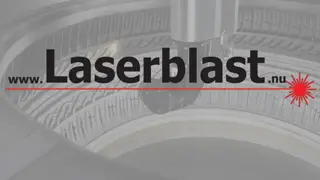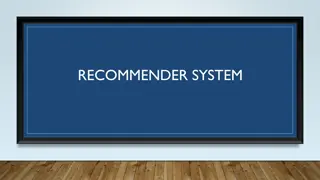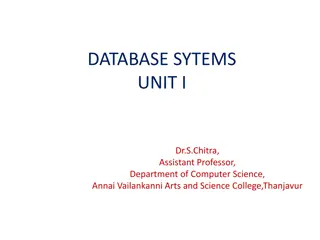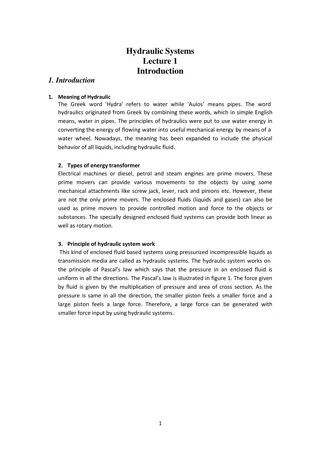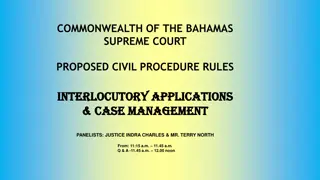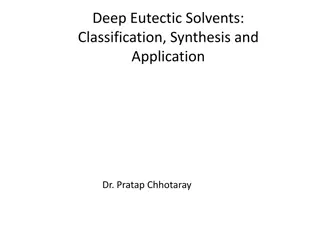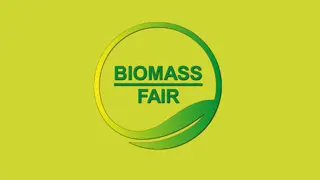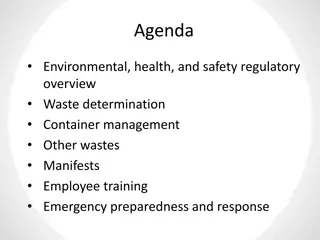Understanding MicroFAST Pretreatment Systems for MN Applications
MicroFAST pretreatment systems are Fixed Activated Sludge Treatment units that provide effective sewage treatment by utilizing media for bacterial growth. These systems come in various sizes for residential use and can achieve high treatment levels with proper maintenance. Understanding the layout and components of a MicroFAST system is crucial for successful implementation in Minnesota applications.
Uploaded on Sep 16, 2024 | 0 Views
Download Presentation

Please find below an Image/Link to download the presentation.
The content on the website is provided AS IS for your information and personal use only. It may not be sold, licensed, or shared on other websites without obtaining consent from the author. Download presentation by click this link. If you encounter any issues during the download, it is possible that the publisher has removed the file from their server.
E N D
Presentation Transcript
Basic need-to-know for MicroFAST pretreatment systems. Specific requirements for MN applications.
MicroFAST Basics The MicroFAST is a Fixed Activated Sludge Treatment system. More simply stated it is basically an ATU that also has media for the bacteria to grow on. The FAST treatment unit is placed inside a septic tank, which we will now call the treatment tank. An external blower then provides oxygen to the underside of this media material. The bacteria grow on the media and digest the sewage as it flows by. The MicroFAST product comes in a variety of sizes for residential use which include: 500, 750 & 900 gpd . These units will achieve MN treatment Level A when followed with a UV lite. Treatment level A only requires 12 of separation to the seasonal high water table and receives an average 25% reduction of the drainfield size. Check the reduced soil loading rates for your specific soil. The MicroFAST system is reasonably priced, but like most ATU s you must be aware of the increased monthly electric bill that comes with it. The power cost is often an additional $25 a month for the constantly running blower motor.
The 500 gpd MicroFAST unit is roughly 2 wide by 4.5 long by 4 tall and weighs about 165 lbs dry. The unit can either hang from a custom made tank lid (left photo), or more commonly stand on the tank floor (right photo). In either case a customized tank is made to accommodate the unit. The FAST unit is preceded by a trash tank or settling area. This configuration can be 2 separate tanks but most often is a single 2-compartment tank. Typically the unit is sent to the tank manufacturer for assembly, the tank is then delivered as a pre-assembled unit.
The basic layout of the MicroFAST system is similar to a standard pressure bed. To better understand this concept, a typical layout is shown on the following slides:
Standardpressure bed layout Drain field 2 compartment septic Lift tank
Now simply add the FAST unit to the 2nd compartment, convert the 1stcompartment to a trash trap , and install the blower assembly. Drain field Lift tank Trash trap / treatment tank
The 1stcompartment of the septic tank or the trash trap should be sized between 350 gallons and the system design flow. The 2ndcompartment or the treatment zone should be sized at a minimum of one days design flow. Drain field Lift tank Trash trap / treatment tank
Water flow & Treatment The 1st compartment receives the sewage and normal settling occurs. The effluent then moves to the 2nd compartment containing the FAST unit. Since this is a gravity on-demand system, excessive surges should be avoided. As long as the surges are not extreme the treatment will not suffer. If the designer chooses to pump the effluent to the FAST unit, the pump rate should be less than 5 gpm, and the maximum flow in any 1 hour should be less than 1/10th the design flow (for a 500 gpd system that would be 50 gallons maximum in any 1 hour).
Water flow & Treatment - continued The external blower feeds air to the inside bottom of the unit and creates a bubbling and splashing action as seen from the water surface. This action circulates the effluent around the media and provides plenty of oxygen for the treatment bugs . Normal water operating level is about 2 above the treatment media. Top view side view
Water flow & Treatment - continued With the incoming effluent, the water level in the tank rises which causes the treated effluent in the FAST unit to gravity flow out of the 2nd compartment and on toward the pump tank.
The effluent gravity flows out of the FAST unit toward the lift tank. It then passes thru the UV lite before entering the lift tank. Drain field Gravity flow to lift tank UV lite Trash trap / treatment tank Lift tank
The most common application is when the unit stands on its own legs. Often a riser is placed above the unit as an observation port which also gives access to the air supply and exhaust lines. In this scenario 2 additional tank risers are necessary to obtain access to pump each tank compartment.
For MN treatment level A, the MicroFAST must be followed with a UV light. The UV light is required to be inspected and cleaned twice a year. The bulb is recommended to be replaced every 2 years. MN7080 does not require lab sampling on any registered Type IV pretreatment system, but some local operating permits may require at least a fecal test to confirm treatment is occurring as intended. Check with your local unit of government for their specific requirements. Salcor UV lite
This is the riser to the lift tank. The UV lite is typically installed here and is shown with an angled pipe fitting. This helps makes room for the float tree and lift pump to all be installed in one riser.
MN7080 requires treatment level A effluent to be: - time dosed and - uniformly distributed. This typically results in using a standard pressure bed or pressure trenches. You must be at least an Intermediate designer to design a residential strength Type IV pretreatment system < 2500 gpd. An operating permit and a management plan are also required.
Install tips During the installer site visit, it is a good time to confirm the placement of the control panels. The control panels can be placed in the same or different locations depending on site conditions. The first panel will control: - power to the blower motor and can be placed near the blower, - the blower alarm signaling a lack of air to the unit. The second panel is best placed by the lift tank and will control: - the lift pump in the dose tank, - a high level alarm, - and power the UV lite.
Install tips - continued It is also a good time to decide wear to place the blower and exhaust vent outlet. The blower air supply line should be 2 sch 40 and be less than 100 long. The exhaust vent pipe must be 3 minimum and should flow through it s own designated vent line. It is not recommended to vent back through the home roof stack. Typically a 4 sanitary Tee is used for the inlet of the trash trap, and for the top of that Tee to be capped, but not glued. The vent line must also provide for proper drainback.
Miscellaneous items The Blower typically lasts at least 5 years. The blower motor and housing should sit on a 26 x 20 base, typically some brick pavers or an Air Conditioning unit type of pad. Keep the blower inlet screen clean. Test vent backpressure by holding your hand 8 from the vent outlet, if you feel no air draft this means it is properly sized. Cover the vent opening with #4 mesh screen (3/16 opening). If you are installing the 6 observation pipe over the treatment unit, make sure it is NOT pushed down all the way onto the top of the media. When pumping, the trash tank & treatment tank should both be pumped, the treatment tank should then be filled back up with clean water.
Miscellaneous items - continued Make sure the 4 outlet pipe of the treatment tank is not pushed in all the way against the MicroFAST unit baffle wall, this will effectively plug it. Under normal operating conditions the effluent should be about 2 above the top of the media and be clear. There should also be robust splashing. The unit should smell like compost , not rotten eggs. Pump the tank when the sludge is within 4 of the bottom of the unit. For seasonal use (gone longer than a month) just shut the blower off. The MicroFAST requires maintenance twice a year for the first 2 years. Once normal is determined annual maintenance is sufficient. Under normal residential use, start up and complete treatment will occur within a week.
Design worksheet When designing any system, the simplest method is to find the appropriate design worksheet at www.SepticResource.com and fill it in with the basic field data you obtained from your site evaluation. The design worksheet for a pretreatment system will still only take a couple of minutes to complete. MicroFAST & Pressure Bed 2011 purple code www.SepticResource.com (vers 14.2) Property Owner: Date: Site Address: PID: Comments: instructions: = site specific input = adjust if desired = self-calculated (DO NOT ADJUST) ? bedroom IV Type Residential System 1) GPD design flow (average flow should be < 70% of design flow) 0 2) PRETREATMENT: (Residential strength to level A/B) 1000 Gallon Trash trap/pump tank to Microfast 3) 500 Gallon MicroFAST unit Yes UV light req'd 4) 30 gpm 10 ft head TREATMENT pump 48 doses per day 0.0 gal /dose (treatment) 10 feet of 2.0 inch supply line leads to 2 gallons of drainback volume 5) 2.0 gallons total pump out volume
The design sheet will also produce a System elevation template
System summary - The MicroFAST residential units are MN registered at 500, 750 & 900 gpd. - The trash trap and treatment tank are both typically sized for about 1 days flow minimum. - The UV lite is typically set in the lift tank riser. - Be aware of the placement of the exhaust vent in regards to potential odors. - Tank pumping is necessary about every 3 years under normal use. - Avoid grease and excessive water softener backwash. - Start up period is about a week under normal residential conditions. - Normal operation: treatment tank is light to medium brown with clear effluent in the unit itself.
Typical beneficial applications Often a small lake lot does not have room for a standard system or even a down sized type III mound. In this situation you may have around 18 to SHWT. With a level A pretreatment system you can eliminate the need for a mound and reduce the size of the required drainfield footprint. With 12 of soil for treatment and roughly 6 of distribution rock, the top of rock elevation is basically back to grade. When the additional 12 of cover above grade is blended in to the existing grade, you often can t tell where the drainfield is. This can be achieved with a pressure bed or using pressure trenches down a slope. With the MicroFAST unit taking no more space than the septic tank, this and the lift tank do not require a lot of yard space. Since these components are at or below grade, the owners often landscape around the lids and blower housing. The end result is a minimal impact to the yard which is quite a contrast to putting in a 3 high (minimum) finished grade mound. If you have room for a few small tanks and a small drainfield, this system will work well.
This concludes the basic MicroFAST need to know training. For further information contact your local distributor or the manufacturer at www.biomicrobics.com





